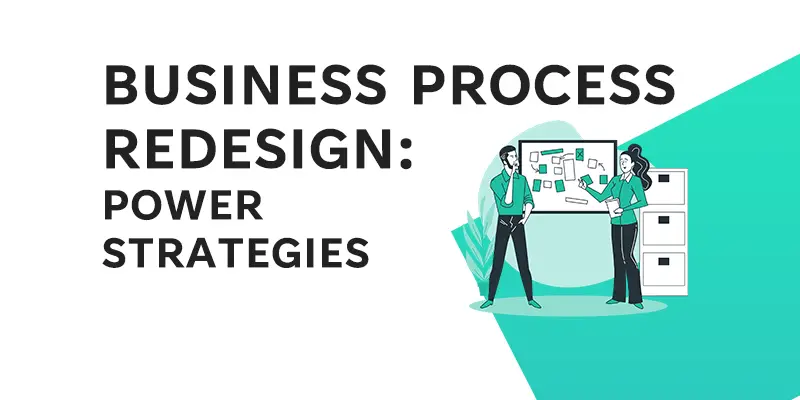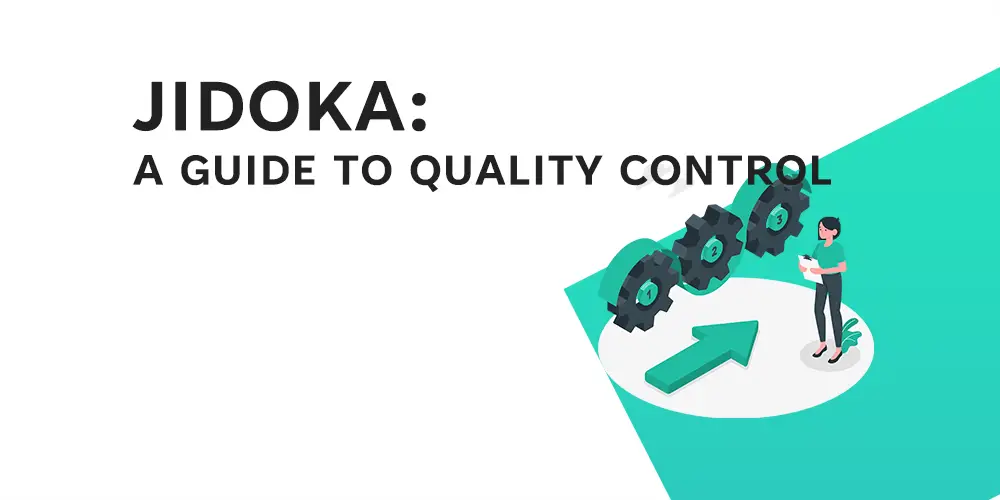Business Process Redesign (BPR) is a powerful approach for transforming and streamlining operations, resulting in increased efficiency, cost savings, and improved performance. This blog post delves into the concept of BPR and offers valuable insights into its goals. We will go over the key steps in the BPR process, as well as common pitfalls to avoid. Most importantly, we will reveal powerful strategies for maximizing the effectiveness of your business process redesign efforts. By implementing these strategies, you can maximize your organization’s potential, optimize workflows, and achieve long-term growth.
Table of Contents
Understanding the BPR Process
BPR aims to transform and optimize business processes in order to achieve specific goals. BPR objectives can vary depending on the needs of the organization, but some common goals include improving efficiency, lowering costs, increasing customer satisfaction, increasing productivity, and encouraging innovation. Organizations can streamline workflows, eliminate redundancies, automate tasks, and align operations with strategic goals by reimagining and redesigning existing processes. The ultimate goal is to improve overall performance significantly, allowing the organization to remain competitive and adapt to changing market conditions.
Understanding the BPR Process
To embark on a successful BPR journey, it is critical to understand the key steps involved. These steps act as a road map for successful process redesign. The following are the essential steps in business process redesign:
Key Steps in Business Process Redesign
- Process Identification and Definition: Begin by identifying the processes that need to be redesigned. Define their parameters, inputs, outputs, and goals. This step establishes the framework for the entire redesign process.
- Process Analysis: Detailed examination of the identified processes. Determine bottlenecks, inefficiencies, and opportunities for improvement. To gain a clear understanding of the current state of the processes, use tools such as process mapping, flowcharts, and data analysis.
- Redesign: Develop a vision for the redesigned processes. This entails rethinking and reengineering workflows in order to eliminate non-value-added activities, simplify processes, and implement innovative solutions. Think about how technology and automation can be used to improve efficiency and productivity.
- Implementation: Put the newly designed processes into action. Create an implementation plan outlining the required changes, resources, and timelines. To ensure a smooth transition to the new processes, ensure effective communication and training.
- Monitoring and Evaluation: Continuously monitor and evaluate the redesigned processes. Performance should be measured against defined objectives and key performance indicators (KPIs). Gather feedback from stakeholders and make necessary adjustments to ensure ongoing optimization.
Common Challenges to Avoid
Organizations may face a variety of challenges and pitfalls when implementing BPR. It is critical to be aware of these and to take proactive steps to address them. Employee resistance to change, a lack of top-level management support, insufficient resources, poor communication, and inadequate planning are all common challenges. Organizations should prioritize change management, involve employees in the redesign process, secure leadership buy-in, allocate adequate resources, foster effective communication channels, and conduct thorough planning and risk assessment to overcome these challenges.
Organizations can set themselves up for a successful business process redesign initiative that delivers tangible and sustainable improvements by understanding the objectives of BPR, following the key steps in the process, and being mindful of common challenges.
Power Strategies for Effective Business Process Redesign
Strategy 1: Clear Definition of Objectives and Scope
It is critical to begin with a clear definition of objectives and scope to ensure a successful business process redesign (BPR). This entails identifying the specific goals you want to achieve through the redesign as well as understanding the project’s boundaries and limitations. Define which processes will be impacted and set realistic expectations for the outcomes. This strategy establishes a solid foundation for effective decision-making and ensures that everyone involved is on the same page and working toward the same goals.
Strategy 2: Comprehensive Process Mapping and Analysis
Another critical strategy for effective BPR is comprehensive process mapping and analysis. It entails mapping out your organization’s existing processes and thoroughly analyzing them to identify inefficiencies, bottlenecks, and areas for improvement. You can gain a thorough understanding of how processes currently work by visualizing the flow of activities, inputs, and outputs. This strategy aids in identifying opportunities for streamlining, optimizing workflows, and eliminating redundant steps or efforts.
Strategy 3: Involving Stakeholders and Building Cross-Functional Teams
Stakeholder involvement and the formation of cross-functional teams are required for successful BPR. Involving stakeholders such as employees, managers, and external partners allows for a wide range of perspectives and insights. Cross-functional teams, which include members from various departments or functions, pool a wide range of expertise and knowledge. You can ensure a holistic approach to BPR by involving stakeholders and forming collaborative teams, fostering better communication, buy-in, and a sense of ownership among those affected by process changes.
Strategy 4: Embracing Technology and Automation
A powerful strategy for effective business process redesign is to embrace technology and automation. Technology solutions can significantly improve process efficiency, accuracy, and speed. Identify areas where technology, such as workflow automation, data analytics, or cloud-based systems, can be used. Automation has the potential to eliminate manual tasks, reduce errors, and boost overall productivity. You can optimize processes and free up resources for more value-added activities by embracing technology as an enabler.
Strategy 5: Continuous Monitoring, Evaluation, and Improvement
The foundation of effective BPR is continuous monitoring, evaluation, and improvement. It is critical to establish mechanisms for ongoing monitoring and evaluation once the redesigned processes have been implemented. Establish key performance indicators (KPIs) and regular check-ins to assess the success and impact of the changes. Seek feedback from stakeholders and collect data to identify areas that need to be improved. This strategy ensures that your redesigned processes remain agile and adaptable over time, allowing for iterative improvements.
You can maximize the effectiveness of your business process redesign efforts by implementing these power strategies. Clear objectives and scope, thorough process mapping, stakeholder involvement, technology adoption, and continuous improvement will enable your organization to streamline operations, boost productivity, and drive long-term growth.
Case Studies: Successful Implementation of Power Strategies
Case Study 1: Company X’s Transformational Process Redesign
In this case study, we will look at how Company X transformed their operations through a transformational process redesign. Prior to the redesign, Company X was plagued by numerous inefficiencies, which resulted in delays, errors, and customer dissatisfaction. Company X was able to achieve remarkable results by implementing power strategies for business process redesign.
First, Company X clearly defined their redesign project’s objectives and scope. They identified key areas for improvement and established specific goals to improve efficiency, cut costs, and improve customer experience.
They then carried out extensive process mapping and analysis. Documenting and analyzing their existing processes, identifying bottlenecks and inefficiencies, and redesigning workflows to streamline operations were all part of the process.
Importantly, Company X actively engaged stakeholders and formed cross-functional teams. They made certain that employees from various departments were involved in the redesign process, bringing a variety of perspectives and expertise. This collaborative approach resulted in more effective problem-solving and higher employee buy-in.
Company X embraced technology and automation as well. They identified opportunities to simplify and accelerate processes by leveraging automation tools and software solutions. They saved significant time and money by automating repetitive tasks and eliminating manual errors.
Finally, Company X established a culture of ongoing monitoring, evaluation, and improvement. To track the impact of the redesign, they established metrics and key performance indicators (KPIs). They were able to identify areas for further optimization and make iterative improvements to their processes thanks to regular evaluations.
The outcome of Company X’s transformational process redesign was astounding. They saw significant efficiency gains, shorter lead times, higher customer satisfaction, and higher profitability. This case study demonstrates the effectiveness of implementing effective strategies in business process redesign.
Case Study 2: How Company Y Achieved Remarkable Efficiency Gains
In this case study, we will look at how Company Y increased efficiency significantly through business process redesign efforts. Company Y encountered difficulties such as lengthy approval processes, task duplication, and inefficient communication channels. They were able to overcome these obstacles and achieve impressive results by implementing power strategies for business process redesign.
Company Y began by defining specific goals and objectives for their redesign project. They identified areas for improvement and established specific goals to improve efficiency, reduce costs, and increase productivity.
Comprehensive process mapping and analysis were critical to the success of Company Y. They meticulously documented their existing processes, identified bottlenecks, and examined the information and task flow. They were able to identify redundancies, eliminate unnecessary steps, and optimize workflows for maximum efficiency thanks to this analysis.
Involving stakeholders and forming cross-functional teams was one of Company Y’s key strategies. They fostered a culture of teamwork and shared responsibility by encouraging collaboration among employees from various departments. They gained valuable insights, identified pain points, and developed solutions that aligned with the needs of the entire organization by engaging stakeholders throughout the redesign process.
Technology and automation were also critical to the success of Company Y. They used cutting-edge tools and software to automate repetitive tasks, streamline communication, and improve data accuracy. They reduced manual errors, reduced processing time, and increased overall productivity by effectively leveraging technology.
The redesign efforts of Company Y were built on continuous monitoring, evaluation, and improvement. They established performance metrics and tracked progress against these benchmarks on a regular basis. This enabled them to identify areas that needed to be optimized further and make data-driven decisions to drive continuous improvement.
Company Y saw significant efficiency gains as a result of their business process redesign. They saw improved workflows, shorter cycle times, better collaboration, and higher overall productivity. This case study demonstrates how effective strategies can have a transformative impact on optimizing business processes and driving organizational success.
Conclusion
For organizations seeking to thrive in a rapidly changing market, business process redesign is a game changer. You can lay a solid foundation for successful BPR initiatives by implementing the power strategies outlined in this blog post. Remember to define clear objectives and scope, conduct comprehensive process mapping, involve stakeholders, leverage technology, and monitor and improve your redesigned processes on a continuous basis. We saw in the case studies how these strategies can result in significant efficiency gains and transformative outcomes. Take advantage of the power of business process redesign to position your company for long-term success. Maintain a proactive, adaptive, and committed approach to process improvement, and watch as your organization thrives in the face of change.








